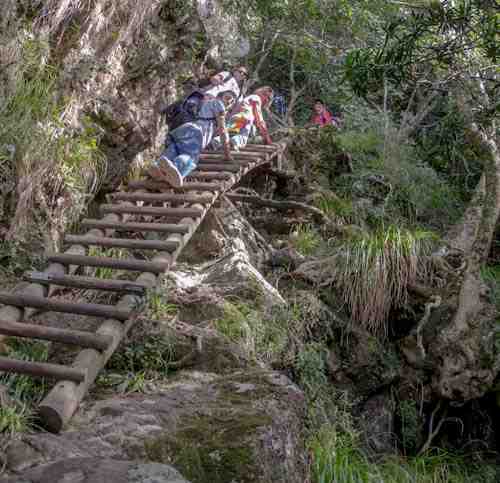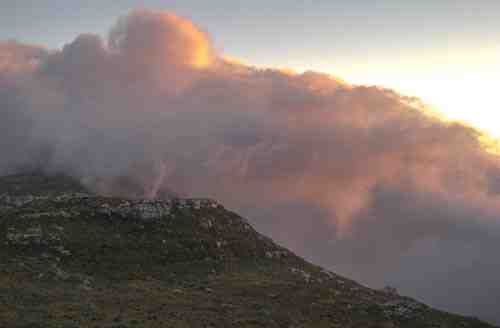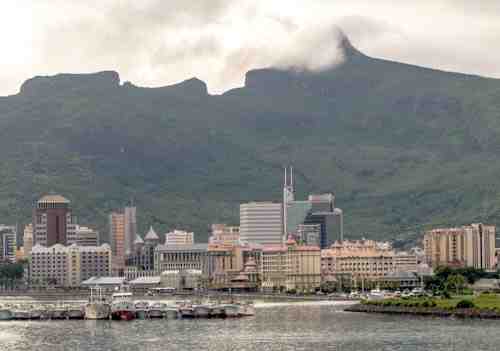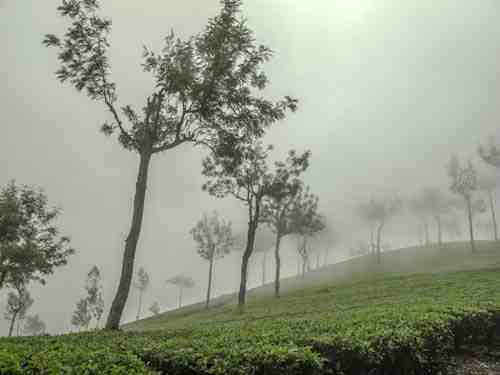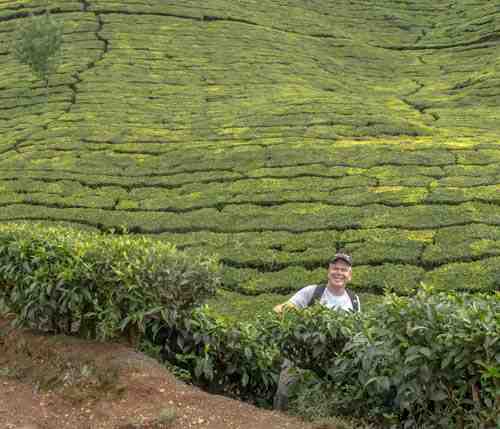Our last port of call was the surprisingly modern city of Casablanca. The port was bustling, filled with unloading container ships and heavily laden trucks moving about. We cleared customs relatively quickly and I joined a field trip to the capital city of Rabat. The trip via bus took us about an hour, traveling along the shore. Rabat used to be a walled city and the historic wall still stands, guarding a city grown much too big to contain within it's old stone walls. The parapets still look down upon a river flowing into the Atlantic. Just outside the walls is a large, very old cemetery which sits above the rocks along the ocean side. A small beach held crowds of young men in swimsuits and young women completely covered from head to foot - Morocco is a Muslim nation although it is quite tolerant and even a bit proud of its Christian and Jewish populations. In 1492 Spain kicked all the Jews and Muslims and many of them ended up right across the Mediterranean in Morocco. I get the impression that they still have a strong sense of that shared adversity today.
 |
| Quite the view |
The following day a small group of us took a harrowing cab ride to the train station. The traffic in Casablanca is no worse than half the other ports we visited, but the drivers are aggressive and impatient. Imagine a New York cab driver with ten minutes to get across mid-town Manhattan to win a million bucks. It was interesting.
Our purpose today was to boarded the express train to the city of Marrakech. Reading that sentence, you may have the same song running through your head as I did that morning. The train trip took about three hours through rolling hills covered with scrub grasses and cultivated plots of cactus-looking plants that apparently are raised for their fruit. They weren't true cactus, those only live in the New World. Sitting there on the train, you could have believed that you were traveling through southern Utah. Outcrops of vaguely red rock stuck out of mute-green sparse patches of tall grass. It was only the occasional minaret from a local mosque that spoiled the illusion.
Marrakech is another walled city, long outgrown it's original fortifications. We were booked into a Riad (small hotel) in the historic part of the city which required a ten minute cab ride. Six of us piled into an old Mercedes Benz with a grizzled old cab driver and we made our way through the city. This cab ride was a bit less harrowing, but no less quick and soon we were dropped at the edge of a huge market square. We crossed the large open area covered with booths selling spices and fruits and totally crowded with people, motor bikes and the occasional car edging itself slowly through the crowd. We had a somewhat imperfect map, but eventually found ourself traveling down a tunnel with merchants on both sides hawking clothing, lamps, and assorted souvenirs of all kinds. The walls between the shops were about ten feet wide and crowded with people. This didn't stop the progress of occasional small cars, motor bikes and even three or four horse-drawn carts. The street was full of life, noise and exotic smells.
 |
| Our new neighborhood |
Following coffee, Daniel showed us to our rooms. The room I was given was actually located in what he called the "petit riad", which was down the alleyway from the main riad. This space had it's own terrace along with a courtyard containing a small plunge pool. Any moment now, James Bond was going to step out and offer me a shaken martini. Absolutely beautiful.
 |
| Goods for sale in the marketplace |
We spent the rest of the day walking around the market, getting hassled by vendors and just enjoying the sights and smells of this little city inside the city. Late afternoon found us back at the riad where our host provided us a bottle of wine and four glasses. We proceeded to the roof of the third floor where we could look out over the entire city. As the sun set, we sipped our wine and admired the maze of rooftops, alleyways and crowded spaces. Right after the sun set, we could hear the call to prayer sounding out from six or seven mosques all over the city. It was a surreal experience.
 |
| Sunset in Marrakesh |
After a fantastic meal of meat kabobs and cous cous, we wandered around the square which had now transformed itself into a maze of small vendors and performers looking for tips. There were snake charmers, monkeys on leashes, dancers and birds of prey. Small displays of lanterns, statues and other items for sale laid in between small carts hawking juice, sweets and other food. It was a crowded and hectic space full of life. Quite a different feel from other markets we had visited in previous ports.
 |
| That nest isn't looking so good... |
The following day we wandered some more, visiting some far flung sides of the city. We visited a (semi) restored part of the city wall fortification which was now mostly open space and nesting space for cranes. We enjoyed a late lunch and then packed up for the return train trip to Casablanca - this time decidedly not an express. The three-hour trip out took more than four back and we didn't get back to the city till late at night.
 |
| Our student group in the Hassan II Mosque |
On the last day in Casablanca, I joined the Comparative Religions course's Field Lab to go to a variety of religious sites in the city. We started at a small museum of Judaism which chronicled the life of Moroccan Jews. Next we visited the Hussan II Mosque - the third largest mosque in the world (the other two being in Saudi Arabia). This was an absolutely massive structure that was amazing to walk through. We were told that the mosque can (and has) held 25,000 worshipers during Ramadan, with 50,000 outside listening to the worship through speakers mounted on poles outside the building. We were given the opportunity to walk through the main structure and then go into the basement to see where the ablutions occur. The entire structure is made of Italian marble and is gorgeous.
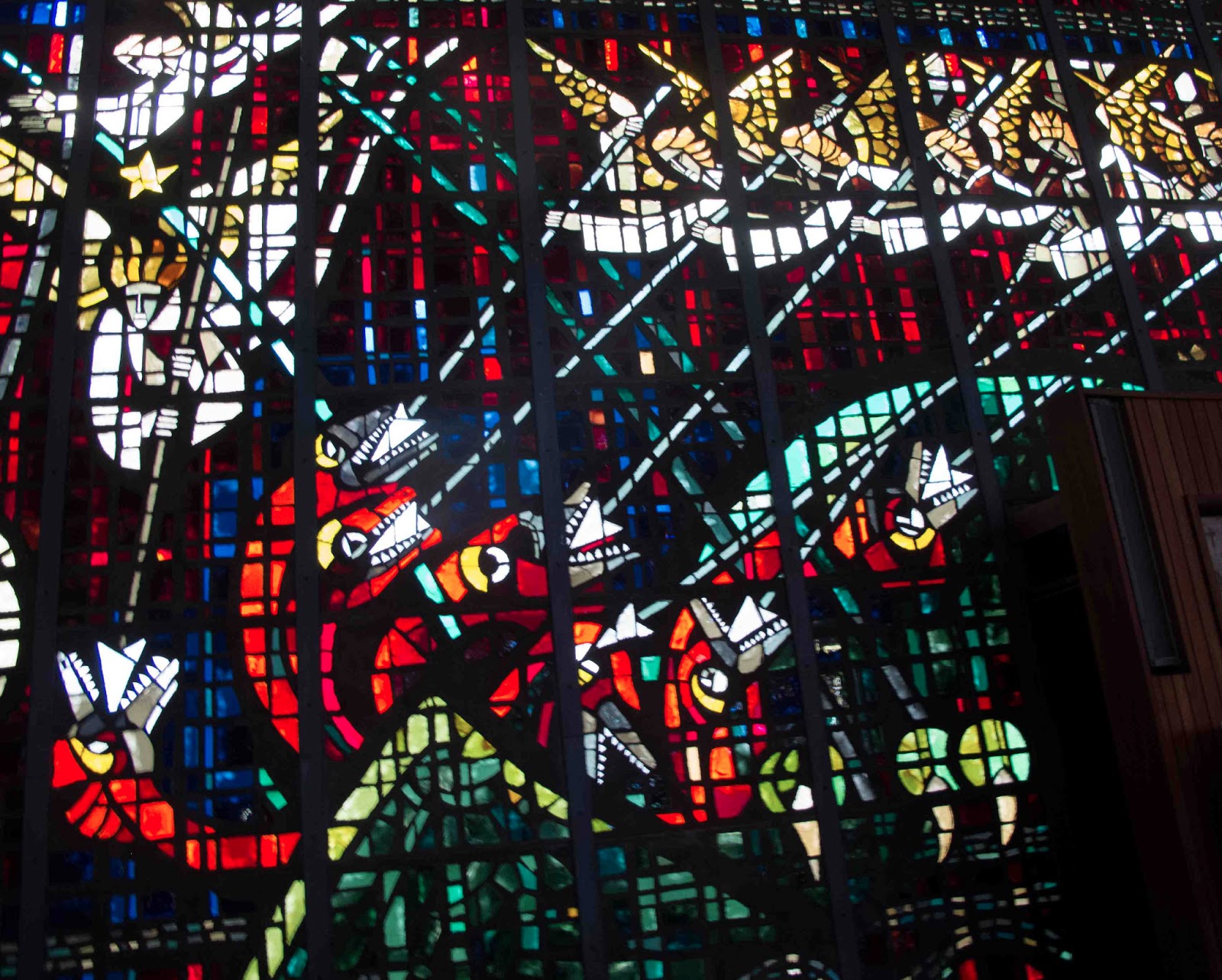 |
| The beast with seven head |
Our last stop was at a Catholic church where a replica of the grotto at Lourdes has been created. The inside the church (which brought all sorts of flashbacks from my childhood) was pretty standard for a Catholic parish church. There was however some amazing stained glass work featuring all sorts of images you don't usually see in stained glass. My favorite was an image of Angels fighting with the seven-headed beast of Revelations. Quite striking.






